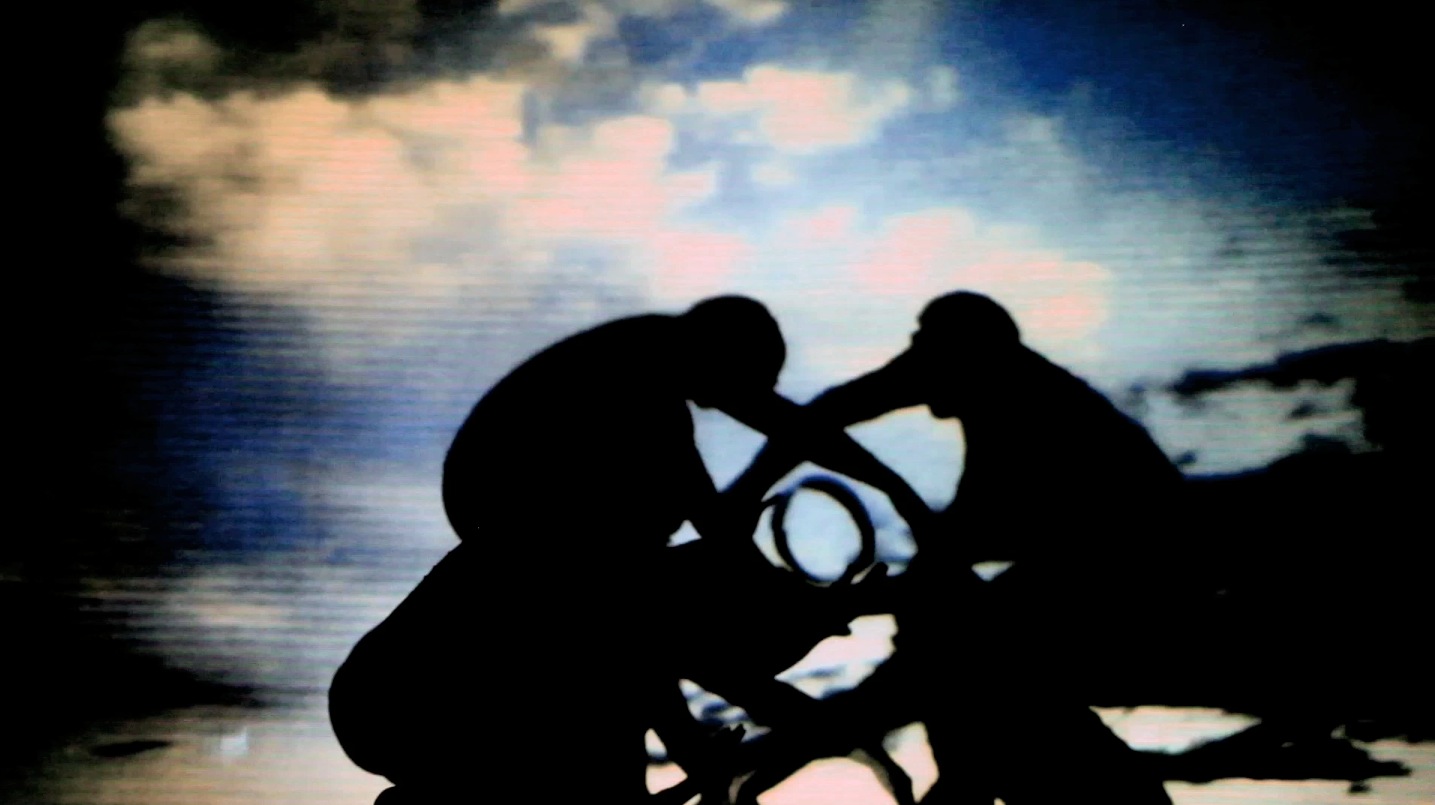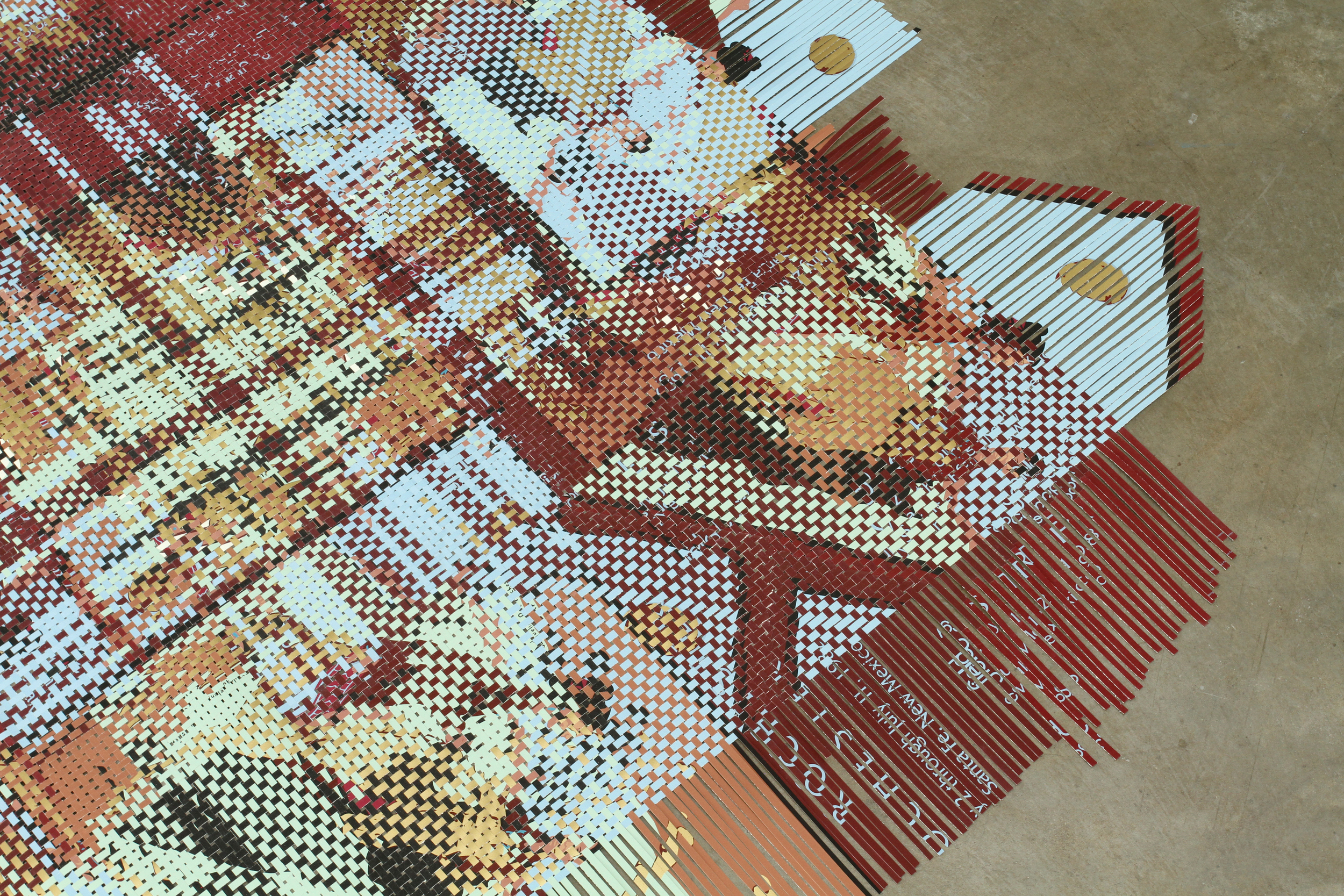The Art of Miguel Arzabe
By Michael Abatemarco for the Santa Fe New Mexican
Friday December 14, 2012
San Francisco-based artist Miguel Arzabe works in a variety of mediums, including painting and video. Circles imagery is a common motif in his work. While rendered abstractly in his paintings, in his videos, circles are included as objects - fruit, ping-pong balls, and a circular kite are among them, all of them orange. In the videos, these objects sometimes mimic the sun in the sky, or are used in conjunction with human actions - being thrown in the air or pushed over a hill. “Many artists have used orange circles.” Arzabe told Pasatiempo, “most famously the Californian John Baldessari in his Throwing Three Balls in the Air to Get a Straight Line (Best of Thirty-Six Attempts), 1973, to which my video work owes a big intellectual and formal debt. But perhaps on a more primal and personal level, my roots come from Bolivia, and the Incas worshipped the sun god Inti, and that makes sense to me.”
Arzabe was selected for a three-month residency at the Santa-Fe Art Institute. “I am interested in the process of art making and how it relates to perception, cognition, and how we come to understand systems greater than ourselves,” whose current project relates to a fellowship he received to attend the Vermont Studio Center in Johnson, Vermont. Arzabe spent his time there working on a series of paintings made in response to an article in Art Forum by Benjamin Buchloh, an art historian at Harvard University, The article is “about color, specifically how the liberating subjective qualities of color have been co-opted by power throughout the history of modern art and how Gerhard Richter’s use of color has been to oppose this tendency by paradoxically addressing it self- consciously. I found the article very informative yet dense. I spent the residency translating the text from jargony artspeak to plain English and creating my own painting relating to the idea’s of Richter’s work.” The result is an interactive PDF document called The Chance Ornament, Concise Truths on Gerhard Richter’s Paintings (After Buchloh). The reader can mouse over the PDF, available on Arzabe’s website, and www.miguelarzabe.net, and see the textual changes and supplemental images Arzabe added to Buchloh’s original.
Continuing an exploration of autumn colors that began in Vermont, he has been spending time in New Mexico looking at aspens. “I was still obsessed with color, so I went up to the mountains to see the aspen four times in one week. I’ve been flying a kite that is in the shape of a circle and filming it in different locations throughout the country - I flew it up in the yellow aspen forest a bunch of times.” Arzabe then projected a recording of the kite on a wall at the institute and filmed his shadow trying to catch the kite. “The piece is called I Will Dream We Tried to Catch our Dream-catcher. The work is a live performance with a video projection of previous performances, layered mediations in time and space, a meditation on the nature of reality through a primal yet self-reflexively contemporary and technological dance.”
Then there is Snowflake , a video project based on how snowflakes form, with water molecules collecting around small particles in the atmosphere. Arzabe covered the floor and adjoining walls of a corner in his studio with white paper. After painting a cube in that corner, its center at the intersection of the two walls and the floor, he positioned himself inside the cube and began shooting. “Paint a line around the center, get into the center cube, take a photo. Repeat over and over again and what you get is a stop-motion animation of a snowflake forming,” he said. “I put on a white shirt and white pants resembling the uniform of the other type of painter, the humble laborer who paints buildings, and became the particle that gives birth to the snowflake.”
Arzabe holds a degree in environmental fluid dynamics from Arizona State University. While science and art making both involve experimental processes, Arzabe is not interested in categorical distinctions. “Science is another way for understanding the world, and my art uses aspects of that method - creating idealized models of systems by reducing the number of variables, inserting an intention into the physical world and eliciting feedback, trying to repeat results,” he said. “It’s more important that there is poetry in the process, whether it asks interesting questions, than whether it is science or art.”
Miguel Arzabe’s work can be seen as part of Santa Fe Art Institute’s open-studio event at 5:30pm on Thursday, Dec 20. SFAI is at 1600 St Michael’s Drive. Call 424-5050 for information. There is no charge.


